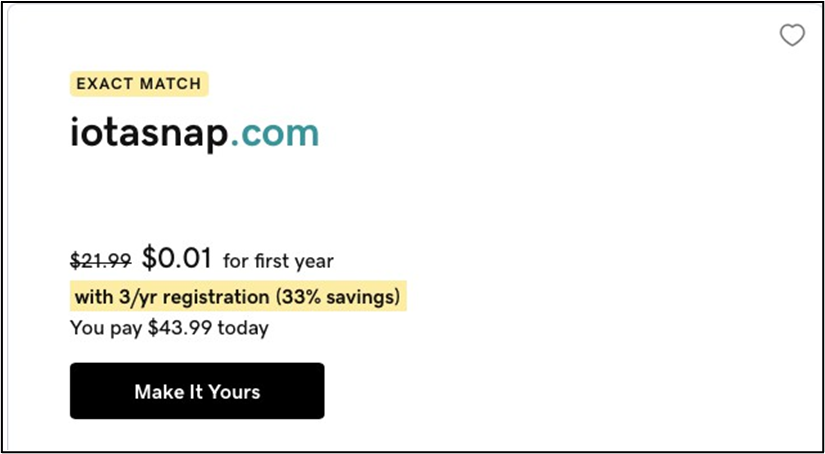Management Summary
LiquidLink contacted Sayfer Security in order to perform penetration testing on their Iota Metamask snap in July 2025.
Before assessing the above services, we held a kickoff meeting with the LiquidLink technical team and received an overview of the system and the goals for this research.
Over the research period of 2 weeks, we discovered 5 vulnerabilities in the system.
In conclusion, several fixes should be implemented following the report, but the system’s security posture is competent.
After a review by the Sayfer team, we certify that all the security issues mentioned in this report have been addressed by the LiquidLink team.
Risk Methodology
At Sayfer, we are committed to delivering the highest quality penetration testing to our clients. That’s why we have implemented a comprehensive risk assessment model to evaluate the severity of our findings and provide our clients with the best possible recommendations for mitigation.
Our risk assessment model is based on two key factors: IMPACT and LIKELIHOOD. Impact refers to the potential harm that could result from an issue, such as financial loss, reputational damage, or a non-operational system. Likelihood refers to the probability that an issue will occur, taking into account factors such as the complexity of the attack and the number of potential attackers.
By combining these two factors, we can create a comprehensive understanding of the risk posed by a particular issue and provide our clients with a clear and actionable assessment of the severity of the issue. This approach allows us to prioritize our recommendations and ensure that our clients receive the best possible advice on how to protect their business.
Risk is defined as follows:

Vulnerabilities by Risk
High – Direct threat to key business processes.
Medium – Indirect threat to key business processes or partial threat to business processes.
Low – No direct threat exists. The vulnerability may be exploited using other vulnerabilities.
Informational – This finding does not indicate vulnerability, but states a comment that notifies about design flaws and improper implementation that might cause a problem in the long run.
Approach
Security Evaluation Methodology
Sayfer uses OWASP WSTG as our technical standard when reviewing web applications. After gaining a thorough understanding of the system we decided which OWASP tests are required to evaluate the system.
Security Assessment
After understanding and defining the scope, performing threat modeling, and evaluating the correct tests required in order to fully check the application for security flaws, we performed our security assessment.
Issue Table Description
Issue title
| ID | SAY-??: An ID for easy communication on each vulnerability |
| Status | Open/Fixed/Acknowledged |
| Risk | Represents the risk factor of the issue. For further description refer to the Vulnerabilities by Risk section. |
| Business Impact | The main risk of the vulnerability at a business level. |
| Location | The URL or the file in which this issue was detected. Issues with no location have no particular location and refer to the product as a whole. |
Description
Here we provide a brief description of the issue and how it formed, the steps we made to find or exploit it, along with proof of concept (if present), and how this issue can affect the product or its users.
Mitigation
Suggested resolving options for this issue and links to advised sites for further remediation.
Security Evaluation
The following tests were conducted while auditing the system
Information Gathering
| Information Gathering | Test Name | Status |
| WSTG-INFO-01 | Conduct Search Engine Discovery Reconnaissance for Information Leakage | Pass |
| WSTG-INFO-02 | Fingerprint Web Server | Pass |
| WSTG-INFO-03 | Review Webserver Metafiles for Information Leakage | Pass |
| WSTG-INFO-04 | Enumerate Applications on Webserver | Pass |
| WSTG-INFO-05 | Review Webpage Content for Information Leakage | Pass |
| WSTG-INFO-06 | Identify application entry points | Pass |
| WSTG-INFO-07 | Map execution paths through application | Pass |
| WSTG-INFO-08 | Fingerprint Web Application Framework | Pass |
| WSTG-INFO-09 | Fingerprint Web Application | Pass |
| WSTG-INFO-10 | Map Application Architecture | Pass |
Configuration and Deploy Management Testing
| Configuration and Deploy Management Testing | Test Name | Status |
| WSTG-CONF-01 | Test Network Infrastructure Configuration | Pass |
| WSTG-CONF-02 | Test Application Platform Configuration | Pass |
| WSTG-CONF-03 | Test File Extensions Handling for Sensitive Information | Pass |
| WSTG-CONF-04 | Review Old Backup and Unreferenced Files for Sensitive Information | Pass |
| WSTG-CONF-05 | Enumerate Infrastructure and Application Admin Interfaces | Pass |
| WSTG-CONF-06 | Test HTTP Methods | Pass |
| WSTG-CONF-07 | Test HTTP Strict Transport Security | Pass |
| WSTG-CONF-08 | Test RIA cross domain policy | Pass |
| WSTG-CONF-09 | Test File Permission | Pass |
| WSTG-CONF-10 | Test for Subdomain Takeover | Pass |
| WSTG-CONF-11 | Test Cloud Storage | Pass |
Identity Management Testing
| Identity Management Testing | Test Name | Status |
| WSTG-IDNT-01 | Test Role Definitions | Pass |
| WSTG-IDNT-02 | Test User Registration Process | Pass |
| WSTG-IDNT-03 | Test Account Provisioning Process | Pass |
| WSTG-IDNT-04 | Testing for Account Enumeration and Guessable User Account | Pass |
| WSTG-IDNT-05 | Testing for Weak or unenforced username policy | Pass |
Authentication Testing
| Authentication Testing | Test Name | Status |
| WSTG-ATHN-01 | Testing for Credentials Transported over an Encrypted Channel | Pass |
| WSTG-ATHN-02 | Testing for Default Credentials | Pass |
| WSTG-ATHN-03 | Testing for Weak Lock Out Mechanism | Pass |
| WSTG-ATHN-04 | Testing for Bypassing Authentication Schema | Pass |
| WSTG-ATHN-05 | Testing for Vulnerable Remember Password | Pass |
| WSTG-ATHN-06 | Testing for Browser Cache Weaknesses | Pass |
| WSTG-ATHN-07 | Testing for Weak Password Policy | Pass |
| WSTG-ATHN-08 | Testing for Weak Security Question Answer | Pass |
| WSTG-ATHN-09 | Testing for Weak Password Change or Reset Functionalities | Pass |
| WSTG-ATHN-10 | Testing for Weaker Authentication in Alternative Channel | Pass |
Authorization Testing
| Authorization Testing | Test Name | Status |
| WSTG-ATHZ-01 | Testing Directory Traversal File Include | Pass |
| WSTG-ATHZ-02 | Testing for Bypassing Authorization Schema | Pass |
| WSTG-ATHZ-03 | Testing for Privilege Escalation | Pass |
| WSTG-ATHZ-04 | Testing for Insecure Direct Object References | Pass |
Session Management Testing
| Session Management Testing | Test Name | Status |
| WSTG-SESS-01 | Testing for Session Management Schema | Pass |
| WSTG-SESS-02 | Testing for Cookies Attributes | Pass |
| WSTG-SESS-03 | Testing for Session Fixation | Pass |
| WSTG-SESS-04 | Testing for Exposed Session Variables | Pass |
| WSTG-SESS-05 | Testing for Cross Site Request Forgery | Pass |
| WSTG-SESS-06 | Testing for Logout Functionality | Pass |
| WSTG-SESS-07 | Testing Session Timeout | Pass |
| WSTG-SESS-08 | Testing for Session Puzzling | Pass |
| WSTG-SESS-09 | Testing for Session Hijacking | Pass |
Data Validation Testing
| Data Validation Testing | Test Name | Status |
| WSTG-INPV-01 | Testing for Reflected Cross Site Scripting | Pass |
| WSTG-INPV-02 | Testing for Stored Cross Site Scripting | Pass |
| WSTG-INPV-03 | Testing for HTTP Verb Tampering | Pass |
| WSTG-INPV-04 | Testing for HTTP Parameter Pollution | Pass |
| WSTG-INPV-05 | Testing for SQL Injection | Pass |
| WSTG-INPV-06 | Testing for LDAP Injection | Pass |
| WSTG-INPV-07 | Testing for XML Injection | Pass |
| WSTG-INPV-08 | Testing for SSI Injection | Pass |
| WSTG-INPV-09 | Testing for XPath Injection | Pass |
| WSTG-INPV-10 | Testing for IMAP SMTP Injection | Pass |
| WSTG-INPV-11 | Testing for Code Injection | Pass |
| WSTG-INPV-12 | Testing for Command Injection | Pass |
| WSTG-INPV-13 | Testing for Format String Injection | Pass |
| WSTG-INPV-14 | Testing for Incubated Vulnerability | Pass |
| WSTG-INPV-15 | Testing for HTTP Splitting Smuggling | Pass |
| WSTG-INPV-16 | Testing for HTTP Incoming Requests | Pass |
| WSTG-INPV-17 | Testing for Host Header Injection | Pass |
| WSTG-INPV-18 | Testing for Server-side Template Injection | Pass |
| WSTG-INPV-19 | Testing for Server-Side Request Forgery | Pass |
Error Handling
| Error Handling | Test Name | Status |
| WSTG-ERRH-01 | Testing for Improper Error Handling | Pass |
| WSTG-ERRH-02 | Testing for Stack Traces | Pass |
Cryptography
| Cryptography | Test Name | Status |
| WSTG-CRYP-01 | Testing for Weak Transport Layer Security | Pass |
| WSTG-CRYP-02 | Testing for Padding Oracle | Pass |
| WSTG-CRYP-03 | Testing for Sensitive Information Sent via Unencrypted Channels | Pass |
| WSTG-CRYP-04 | Testing for Weak Encryption | Pass |
Business logic Testing
| Business logic Testing | Test Name | Status |
| WSTG-BUSL-01 | Test Business Logic Data Validation | Pass |
| WSTG-BUSL-02 | Test Ability to Forge Requests | Pass |
| WSTG-BUSL-03 | Test Integrity Checks | Pass |
| WSTG-BUSL-04 | Test for Process Timing | Pass |
| WSTG-BUSL-05 | Test Number of Times a Function Can be Used Limits | Pass |
| WSTG-BUSL-06 | Testing for the Circumvention of Work Flows | Pass |
| WSTG-BUSL-07 | Test Defenses Against Application Mis-use | Pass |
| WSTG-BUSL-08 | Test Upload of Unexpected File Types | Pass |
| WSTG-BUSL-09 | Test Upload of Malicious Files | Pass |
Client Side Testing
| Client Side Testing | Test Name | Status |
| WSTG-CLNT-01 | Testing for DOM-Based Cross Site Scripting | Pass |
| WSTG-CLNT-02 | Testing for JavaScript Execution | Pass |
| WSTG-CLNT-03 | Testing for HTML Injection | Pass |
| WSTG-CLNT-04 | Testing for Client Side URL Redirect | Pass |
| WSTG-CLNT-05 | Testing for CSS Injection | Pass |
| WSTG-CLNT-06 | Testing for Client Side Resource Manipulation | Pass |
| WSTG-CLNT-07 | Test Cross Origin Resource Sharing | Pass |
| WSTG-CLNT-08 | Testing for Cross Site Flashing | Pass |
| WSTG-CLNT-09 | Testing for Clickjacking | Pass |
| WSTG-CLNT-10 | Testing WebSockets | Pass |
| WSTG-CLNT-11 | Test Web Messaging | Pass |
| WSTG-CLNT-12 | Testing Browser Storage | Pass |
| WSTG-CLNT-13 | Testing for Cross Site Script Inclusion | Pass |
API Testing
| API Testing | Test Name | Status |
| WSTG-APIT-01 | Testing GraphQL | Pass |
Order audit from Sayfer
Security Assessment Findings
Arbitrary Fullnode URL Injection
| ID | SAY-01 |
| Status | Fixed |
| Risk | High |
| Business Impact | If an attacker acquires the whitelisted domain, they can bypass the admin boundary to set arbitrary fullnode URLs, corrupting the snap’s view of the chain and tricking users into approving malicious or misrepresented operations. |
| Location | – index.tsx; admin_setFullnodeUrl |
Description
By design, the snap gates admin functionality like setting the fullnode URL through the admin_setFullnodeUrl method, solely by checking the origin against hardcoded values, including https: /iotasnap.com. If an attacker is able to acquire that domain, they can host a malicious page that will pass assertAdminOrigin and invoke admin-only methods like admin_setFullnodeUrl.
- tsx:271-279
case 'admin_setFullnodeUrl': {
assertAdminOrigin(origin);
const [validationError, params] = validate(
request.params,
SerializedAdminSetFullnodeUrl,
);
if (validationError = undefined) {
throw InvalidParamsError.asSimpleError(validationError.message);
}
.
}
Because the fullnode URL is accepted without validation and user interaction, the attacker can then point the snap at arbitrary endpoints and manipulate all downstream behavior. Indeed, we found the whitelisted domain is not registered, and can be acquired by potential attackers.

Mitigation
We recommend ensuring that any admin origin domain is actually owned and provably controlled. Additionally even if the domain is trusted, it is suggested to inform the user with some dialog box, that his RPC URL was changed.
Lack of Input Validation for RPC Parameters
| ID | SAY-02 |
| Status | Fixed |
| Risk | Medium |
| Business Impact | Malformed RPC payloads can propagate arbitrary data into downstream logic like transaction construction, UI rendering or error handling, making it easier to craft payloads that appear benign in the UI while behaving differently internally. |
| Location | – types.ts; validate<TData>(unknown, unknown => TData) |
Description
The validation in most of the state changing methods is a no-op cast.
- ts:129-132
export const SerializedIotaSignPersonalMessageInput = (
params: unknown,
): SerializedIotaSignPersonalMessageInput =>
params as SerializedIotaSignPersonalMessageInput;And validate<TData>( .) itself just calls the schema and checks structural correctness. There is no type enforcement, and no sanitization.
- ts:110-125
export function validate<TData>(
params: unknown,
schema: (params: unknown) => TData,
): [Error | undefined, TData] {
try {
/ This is a simplified version since we don't know the exact
validation library
/ you might be using. If you're using zod, you would use
schema.parse(params)
const result = schema(params);
return [undefined, result];
} catch (error) {
return [
error instanceof Error ? error : new Error('Validation failed'),
{} as TData,
];
}
}Mitigation
Replace the current schema stubs with a real parser that strictly enforces required fields, types, allowed values, and rejects unexpected fields Additionally make sure that any subsequent usage assumes a properly validated shape, eliminating reliance on any where possible.
Transaction Mutability between Dry Run and Execution
| ID | SAY-03 |
| Status | Fixed |
| Risk | Low |
| Business Impact | Users can approve a dry-run transaction but a different transaction may be executed, leading to unintended state changes or asset movement. |
| Location | – index.tsx; signAndExecuteTransaction |
Description
Dry runs are performed on the result of buildTransactionBlock(string, Transaction, string), which may mutate the transaction block (e.g. setting the sender) and produces canonical bytes (transactionBlockBytes).
- ts:142-144
if (!transactionBlock.getData().sender) {
transactionBlock.setSender(sender);
}However, after user confirmation, execution calls signAndExecuteTransaction(IotaClient, any, any, any) with the original input.transactionBlock instead of the built one. There is no binding or fingerprint comparison between what was dry-run and what is actually executed, so the executed transaction can diverge.
- tsx:255-2G3
const res = await signAndExecuteTransaction(
client,
input.transactionBlock as any,
input.requestType,
input.options,
);
const ret = res as any as IotaSignAndExecuteTransactionOutput;
return ret;
}We recommend exactly executing the transaction that was dry-run: pass the built/mutated transaction block or its serialized bytes to signAndExecuteTransaction( .), or hash the dry-run bytes and compare against the execution serialization, aborting if they differ.
Mitigation
We recommend reconsidering the one‐time derived‐address write to initialization (Context.init()), and removing state writes from the handle() method so it remains truly read-only.
Misleading Estimated Gas Fees
| ID | SAY-04 |
| Status | Fixed |
| Risk | Low |
| Business Impact | If the gas estimation is missing, the UI shows “0 IOTA” as the fee, misleading the user into approving a transaction under the false assumption that it is free. |
| Location | – util.ts; calcTotalGasFeesDec(DryRunTransactionBlockResponse) |
Description
calcTotalGasFeesDec( .) returns the literal string ‘0’ when
dryRunRes Yeffects YgasUsed is undefined, returning “no cost” rather than “estimate unavailable”. That value is then rendered in the confirmation dialog with no differentiation or warning when the underlying data was missing. The absence of gasUsed silently collapses into a zero-fee presentation.
- tsx:241-244
<Text>
Estimated gas fees: *
{calcTotalGasFeesDec(result.dryRunRes as any)} IOTA *
/Text>Mitigation
We recommend distinguishing between “zero fee” and “fee estimate unavailable”.
Inadequate Control Character Detection
| ID | SAY-05 |
| Status | Fixed |
| Risk | Low |
| Business Impact | Messages containing invisible or formatting characters can be shown as “human-readable” while hiding malicious intent, causing users to approve and sign payloads they misunderstand. |
| Location | – index.tsx; signPersonalMessage |
Description
The code uses the regex /[в- -]/u to detect control characters and falls back to base 64 encoding when they appear. That pattern only covers a subset of C0 control characters and omits others (and does not address Unicode format characters like bidi overrides or zero-width characters) that can be abused for visual deception.
- tsx:52-55
if (/[в- -]/u.test(decodedMessage)) {
decodedMessage = Buffer.from(input.message).toString('baseG4');
info = ` *${origin} * is requesting to sign the following message
(baseG4 encoded):`;
}Malicious actors could inject Unicode control characters like right-to-left override or zero-width spaces to manipulate how messages appear to users. Additionally, Certain control characters could break the MetaMask UI dialog rendering.
Mitigation
Replace the heuristic with robust detection, testing for all Unicode control and format characters using property escapes, like /\p{Cc}|\p{Cf}/u and explicitly handling known spoofing vectors like bidi overrides and zero-width characters.
Alternatively, if such characters will be found in the signed string – you could include the extra string to the message informing users that something seems to be wrong or malicious.







